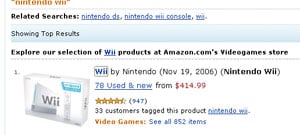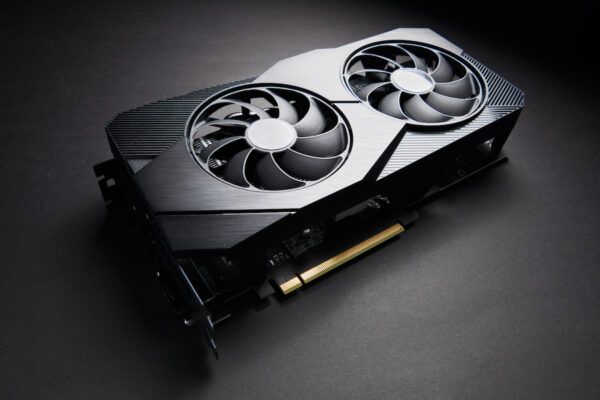Buyer beware: Not all Amazon.com products sold by Amazon.com
I buy a lot of stuff from Amazon.com. A lot. In my opinion, Amazon.com has one of the easiest and most straight forward shopping interfaces on the Internet. In fact, I think Amazon.com has set the standard for all others to follow. And as a benchmark, I know a lot of noobies that have ordered products from Amazon.com all by themselves with absolutely no assistance from anyone with technical expertise. That’s impressive.
So it troubled me the other day when I spoke to my friend who was trying to find a Nintendo Wii only to discover all of the brick and mortar stores were completely sold out. I asked her if she checked Amazon.com and she replied, “Yeah, they had it but I’m not going to shell out $400 for a Nintendo Wii.”
A $400 Nintendo Wii from Amazon.com? Could it be true?
I have always believed Amazon.com to be extremely competitive in the pricing of their electronics and couldn’t believe they would price-gouge so badly on a product that should only cost around $250. Of course, I immediately investigated.
 After typing in “Nintendo Wii” as my search criteria, Amazon.com quickly displayed the search results and lo and behold, there was the $400 Nintendo Wii at the top of the list, just as my friend had described. But it wasn’t sold by Amazon.com. Instead, it was sold by a seller from Amazon.com’s auction site (more on this later).
After typing in “Nintendo Wii” as my search criteria, Amazon.com quickly displayed the search results and lo and behold, there was the $400 Nintendo Wii at the top of the list, just as my friend had described. But it wasn’t sold by Amazon.com. Instead, it was sold by a seller from Amazon.com’s auction site (more on this later).
This is a change that Amazon.com has recently made that I think is one of their first really bad moves. Yes, I’m sure there are others but this one just happens to be high on my list.
What Amazon.com does now is show you the lowest price for the item you are searching for from whatever list of sellers happen to have the product in stock. Keep in mind, Amazon.com handles transactions from hundreds of different sellers, not just themselves.
How Amazon.com’s pricing really works
Perhaps a real-world example would help. Let’s say Amazon.com has two Nintendo Wiis in stock and someone searches for “Nintendo Wii”. Amazon.com will display the Nintendo Wii priced right around $250 at the top of the list. $250 because Amazon.com has some in stock. But the second both of those Nintendo Wiis are sold and Amazon.com is out of inventory, they will move on to the next best seller (based on price) and display that as the new price. Worse yet, if none of the sellers have any in inventory, which was the case with my friend, Amazon.com then displays the best price from the list of Nintendo Wiis on their Amazon.com auction site (think eBay on Amazon.com).
I think this whole process makes Amazon.com look bad because if you aren’t paying attention to which vendor is actually selling you the product, you immediately think that the price displayed is Amazon.com’s price. Again, like the $400 price tag my friend believed was from Amazon.com.
I propose that Amazon.com should list the price they sell it for with some sort of “sold out” or “out of inventory” message and then give the buyer an option to see the “next best option” or “next best price” from one of their other sellers.
This bothers me enough that as a professional courtesy to my fellow noobie audience I am going to send a link to this post straight to Amazon.com to see how they respond. I’ll let you know if and when I hear anything.








